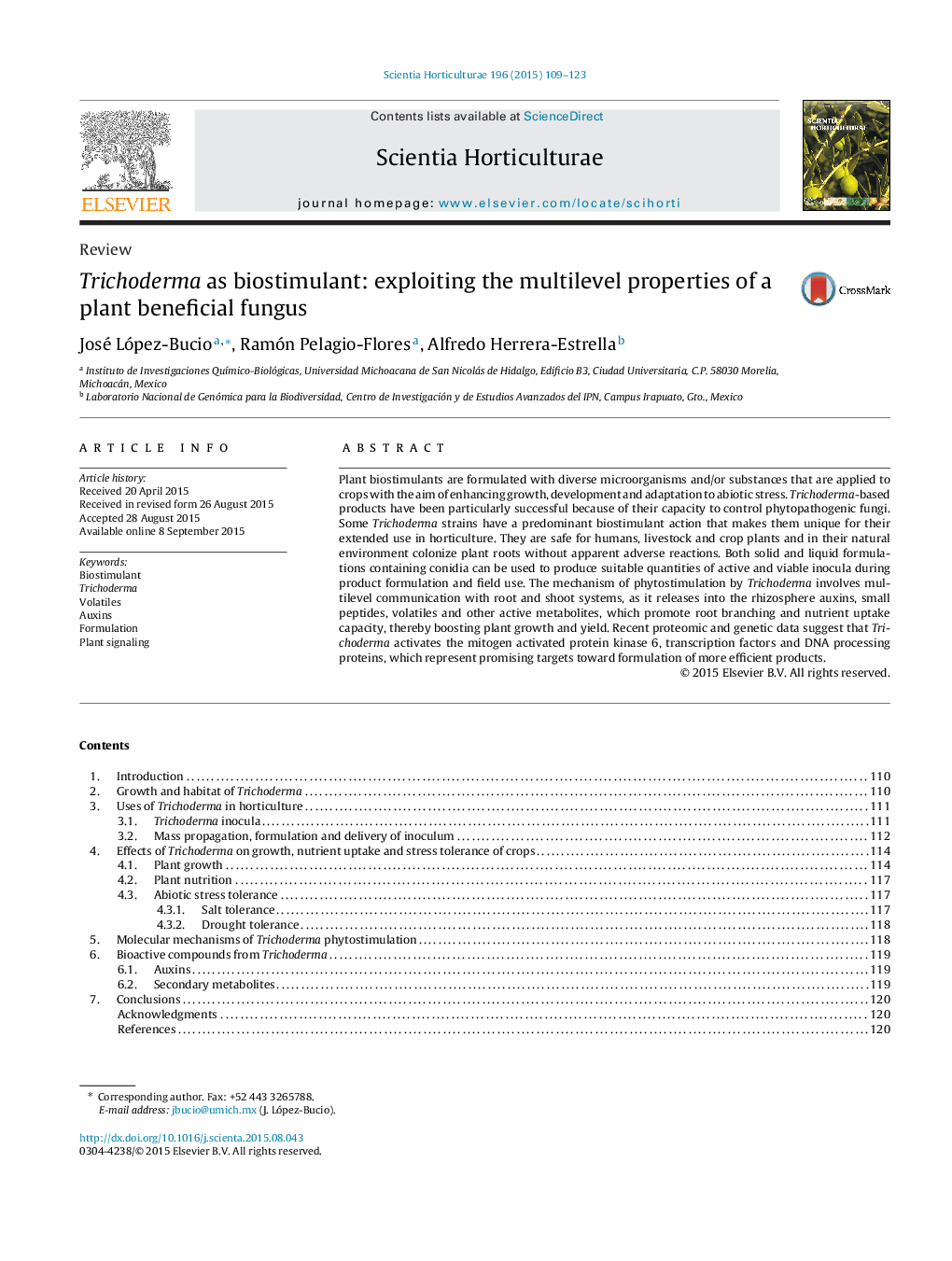| کد مقاله | کد نشریه | سال انتشار | مقاله انگلیسی | نسخه تمام متن |
|---|---|---|---|---|
| 6406479 | 1628802 | 2015 | 15 صفحه PDF | دانلود رایگان |

- Trichoderma biostimulants boost crop nutrition, growth and stress response.
- Formulations combining Trichoderma with other beneficial microbes increase yield.
- Biostimulants with greater stability are critical to successful application.
- Trichoderma improves root growth and nutrient uptake via auxin production.
- Trichoderma-induced changes in gene expression are integral to phytostimulation.
Plant biostimulants are formulated with diverse microorganisms and/or substances that are applied to crops with the aim of enhancing growth, development and adaptation to abiotic stress. Trichoderma-based products have been particularly successful because of their capacity to control phytopathogenic fungi. Some Trichoderma strains have a predominant biostimulant action that makes them unique for their extended use in horticulture. They are safe for humans, livestock and crop plants and in their natural environment colonize plant roots without apparent adverse reactions. Both solid and liquid formulations containing conidia can be used to produce suitable quantities of active and viable inocula during product formulation and field use. The mechanism of phytostimulation by Trichoderma involves multilevel communication with root and shoot systems, as it releases into the rhizosphere auxins, small peptides, volatiles and other active metabolites, which promote root branching and nutrient uptake capacity, thereby boosting plant growth and yield. Recent proteomic and genetic data suggest that Trichoderma activates the mitogen activated protein kinase 6, transcription factors and DNA processing proteins, which represent promising targets toward formulation of more efficient products.
Journal: Scientia Horticulturae - Volume 196, 30 November 2015, Pages 109-123